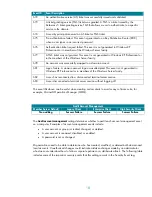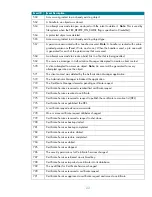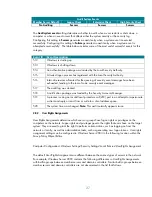
22
545
Main mode authentication failed because of a Kerberos failure or a password that is not
valid.
546
IKE security association establishment failed because the peer sent a proposal that is not
valid. A packet was received that contained data that is not valid.
547
A failure occurred during an IKE handshake.
548
Logon failure. The security identifier (SID) from a trusted domain does not match the
account domain SID of the client.
549
Logon failure. All SIDs corresponding to untrusted namespaces were filtered out during an
authentication across forests.
550
Notification message that could indicate a possible denial-of-service (DoS) attack.
551
A user initiated the logoff process.
552
A user successfully logged on to a computer using explicit credentials while already
logged on as a different user.
682
A user has reconnected to a disconnected terminal server session.
683
A user disconnected a terminal server session without logging off.
Note
: This event is generated when a user is connected to a terminal server session over
the network. It appears on the terminal server.
Audit Object Access
Member Server Default
Legacy Client
Enterprise Client
High Security Client
No Auditing
Success Failure
Success Failure
Success Failure
By itself, this setting will not cause any events to be audited. The
Audit object access
setting
determines whether to audit the event of a user accessing an object-for example, a file, folder, registry
key, printer, and so forth- that has a specified SACL. A SACL is comprised of access control entries
(ACEs). Each ACE contains three pieces of information:
•
The security principal (user, computer, or group) to be audited.
•
The specific access type to be audited, called an access mask.
•
A flag to indicate whether to audit failed access events, successful access events, or both.
Configuring this setting to
Success
generates an audit entry each time that a user successfully
accesses an object with a specified SACL. Configuring this setting to
Failure
generates an audit entry
each time that a user unsuccessfully attempts to access an object with a specified SACL. Corporations
should define only the actions they want enabled when configuring SACLs. For example,
administrators may want to enable the
Write and Append Data auditing
setting on executable files
to track the replacement or changes to those files, which computer viruses, worms, and Trojan horses
will commonly cause. Similarly, administrators might want to track changes to or even the reading of
sensitive documents. Therefore, this guide recommends enabling both the
Success
and
Failure
auditing values for this setting in all three environments defined in this guide.
















































